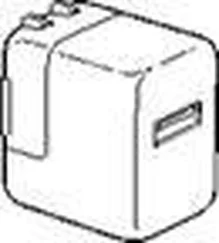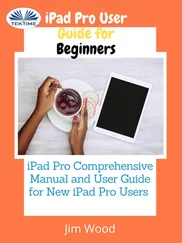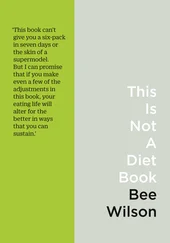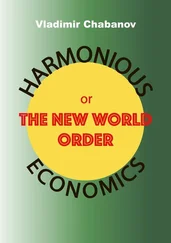Companies are organized very differently from in Smith’s days too, whatever the ownership form. In Smith’s day, most companies were small with one production site under a simple command structure made up of a few foremen and ordinary workers, and perhaps a ‘caretaker’ (which is what the hired manager was called then). Today, many companies are huge, often employing tens of thousands of workers or even millions of them all over the world. Walmart employs 2.1 million people, while McDonald’s, including franchises, [17] Franchises are independent companies using a bigger company’s brand and supplies, rather than branches operated directly by the bigger company.
employs around 1.8 million people. They have complicated internal structures, variously made up of divisions, profit centres, semi-autonomous units and what not, hiring people with complicated job specifications and pay grades within a complex, bureaucratic command structure.
Workers are different too
In Smith’s time, most people did not work for capitalists as wage labourers. The majority of people still worked in agriculture even in Western Europe, where capitalism was then most advanced. [18] Even in the most industrialized countries, like Britain and the Netherlands, over 40 per cent of people worked in agriculture. In the other Western European countries, the ratio was over 50 per cent and in some countries up to 80 per cent.
A small minority of them worked as wage labourers for agricultural capitalists, but most of them were either small subsistence farmers or tenants(those who rent land and pay a proportion of their output in return) of aristocratic landlords.
During this era, even many of those who worked for capitalists were not wage labourers. There were still slaves around. Like tractors or traction animals, slaves were means of production owned by capitalists, especially the plantation owners in the American South, the Caribbean, Brazil and elsewhere. It was two generations after the publication of The Wealth of Nations (henceforth TWON ) that slavery was abolished in Britain (1833). It was nearly a century after TWON and after a bloody civil war that slavery was abolished in the US (1862). Brazil abolished it only in 1888.
While a large proportion of people who worked for capitalists were not wage labourers, many wage labourers were people who wouldn’t be allowed to become wage labourers today. They were children. Few thought that there was anything wrong with hiring children. In his 1724 book A Tour Through the Whole Island of Great Britain , Daniel Defoe, the author of Robinson Crusoe , expressed his delight at the fact that in Norwich, then a centre for cotton textiles, ‘the very children after 4 or 5 years of age could everyone earn their own bread’, thanks to the 1700 ban on the import of calicoes, the then prized Indian cotton textile. [19] D. Defoe, A Tour Through the Whole Island of Great Britain (Harmondsworth: Penguin, 1978), p. 86.
Child labour subsequently became restricted and then banned, but that was generations after Adam Smith’s death in 1790.
Today, in Britain and other rich countries, the picture is completely different. [20] In most developing countries, in which capitalism is still underdeveloped, the situation is still not too dissimilar from that found in Western Europe in Smith’s time. In the poorest ones, child labour is still prevalent, while a lot of people are still tenants of semi-feudal landlords. Anything between 30 per cent and 90 per cent of the workforce in these countries may be self-employed, many of whom are engaged in subsistence farming.
Children are not allowed to work, except for limited hours for a limited range of things, such as paper rounds. There are no legal slaves. Of the adult workers, around 10 per cent are self-employed– that is, they work for themselves – 15–25 per cent work for the government, and the rest are wage labourers working for capitalists. [21] Depending on the country, 60–80 per cent of those who work for capitalists work for small and medium-sized enterprises (SMEs), employing less than a few hundred people. SMEs are defined as enterprises employing less than 250 people in the European Union and less than 500 in the US.
In Smith’s time, markets were largely local or at most national in scope, except in key commodities that were traded internationally (e.g., sugar, slaves or spices) or a limited range of manufactured goods (e.g., silk, cotton and woollen clothes). These markets were served by numerous small-scale firms, resulting in the state that economists these days call perfect competition, in which no single seller can influence the price. For people from Smith’s time, it would have been impossible even to imagine companies hiring over twice the then size of London’s population (0.8 million in 1800) operating in territories that outnumber the then British colonial territories (around twenty) by a factor of six (McDonald’s operates in over 120 countries). [22] At the time London was the biggest city in Europe and the second biggest in the world after Beijing, which had over 1.1 million people. Having just lost the American colonies, the British colonial territories at the time when TWON came out consisted of (parts of) India, Canada, Ireland and around a dozen and a half Caribbean islands.
Today, most markets are populated, and often manipulated, by large companies. Some of them are the only supplier ( monopoly) or, more typically, one of the few suppliers ( oligopoly) – not just at the national level but increasingly at the global level. For example, Boeing and Airbus supply close to 90 per cent of world civilian aircrafts. Companies may also be the sole buyer ( monopsony) or one of the few buyers ( oligopsony).
Unlike the small companies in Adam Smith’s world, monopolistic or oligopolistic firms can influence market outcomes – they have what economists call market power. A monopolistic firm may deliberately restrict its output to raise its prices to the point that its profit is maximized (I explain the technical points in Chapter 11 – feel free to ignore them now). Oligopolistic firms cannot manipulate their markets as much as a monopolistic firm can, but they may deliberately collude to maximize their profits by not undercutting each other’s prices – this is known as a cartel. As a result, most countries now have a competition law(sometimes called an anti-trust law) in order to counter such anti-competitive behaviours– breaking up monopolies (for example, the US government broke up AT &T, the telephone company, in 1984) and banning collusion among oligopolistic firms.
Monopsonistic and oligopsonistic firms were considered to be theoretical curiosities even a few decades ago. Today, some of them are even more important than monopolistic and oligopolistic firms in shaping our economy. Exercising their powers as one of the few buyers of certain products, sometimes on a global scale, companies like Walmart, Amazon, Tesco and Carrefour exercise great – sometimes even defining – influence on what gets produced where, who gets how big a slice of profit and what consumers buy.
Money – the financial system – has also changed
Money – the financial system – has also changed [23] The information in the rest of the section is from H.-J. Chang, Kicking Away the Ladder: Development Strategy in Historical Perspective (London: Anthem Press, 2002), pp. 93–9, unless otherwise specified.
Читать дальше












